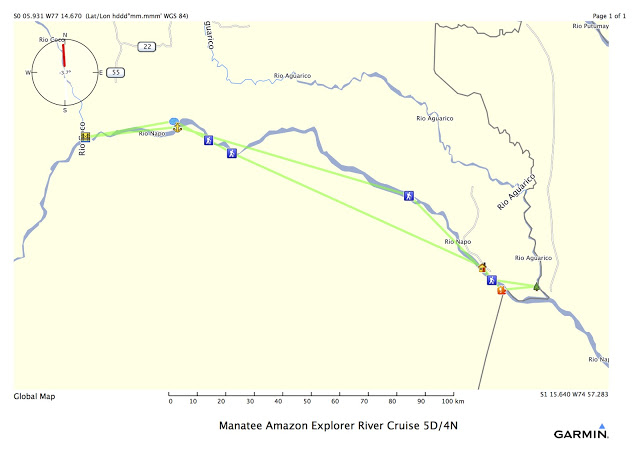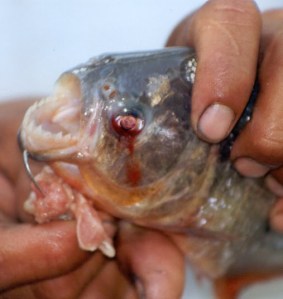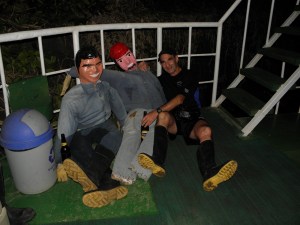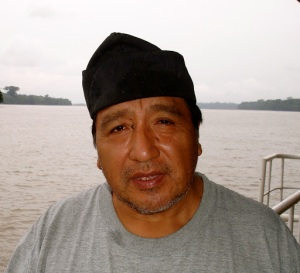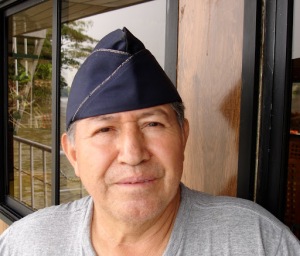Ecuador
CAPTAIN´S BLOG
 Time flies and march it is almost at its end, the new year 2013 bring us a lot of new cruising explorations and expeditions, starting January we were very happy to receive a group of students from the University of North Carolina, USA, they have the chance to spend one night camping in the middle of the Jatuncocha Lake inside of the Yasuni National Park, Kayaking, swimming stargazing, and many more things, they have a very enjoyable exploration cruise.
Time flies and march it is almost at its end, the new year 2013 bring us a lot of new cruising explorations and expeditions, starting January we were very happy to receive a group of students from the University of North Carolina, USA, they have the chance to spend one night camping in the middle of the Jatuncocha Lake inside of the Yasuni National Park, Kayaking, swimming stargazing, and many more things, they have a very enjoyable exploration cruise.As in many occasions, we are continuing supporting indigenous communities in providing free transportation to their homes, scholarships to students
who wants to learn ecoturism and as always giving advice in their own ecoturism projects.
"G L A M P I N G"
(Glamorous camping)A new experience on board the
Manatee Amazon Explorer
|
|
|
|
|
|
|
Advantage Travel – 2012 – www.manateeamazonexplorer.com
|
SEPTEMBER 2012 JUST FAUNA
 |
| Pecarie |
 |
| Scorpion |
 |
| Black Skimmers |
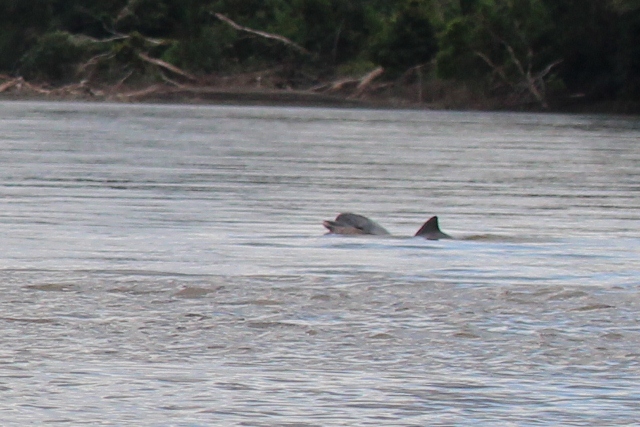 |
| Gray Dolphin – Sotalia Fluviatilis |
 |
| Gray Dolphin – Sotalia Fluviatilis |
 |
| Gray Dolphin – Sotalia Fluviatilis |
 |
| Blue and Yellow Macaws |
 |
| Giant Otter |
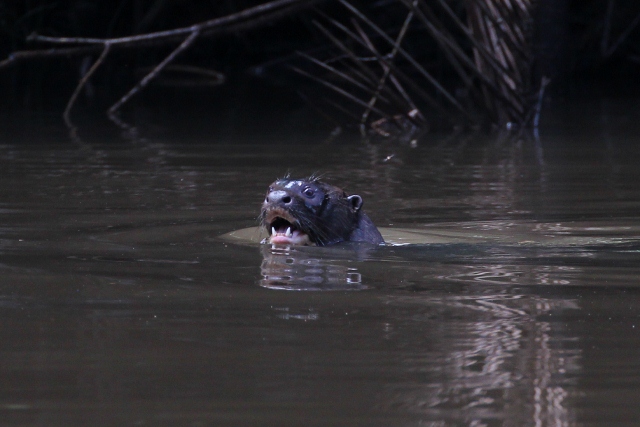 |
| Giant Otter |
 |
| Giant Otter |
 |
| Butterfly |
ANACONDAS
El día Lunes 23 de Julio, mientras estábamos navegando aguas abajo por el rio Napo, justo por el sector de la casa del guardaparques del Parque Nacional Yasuni, encontramos 2 anacondas por la orilla del rio, una de ellas tenia aproximadamente unos 5 metros de largo y parecía que estaba recién comida y otra mas pequeña a unos 20 metros de la otra, esta experiencia se la vivió desde abordo del barco y todos nuestros pasajeros disfrutaron de este fascinante avistamiento, disfruten de este video cortesía de nuestro Guía naturalista Milton Avalos.
On Monday July 23th, while we were cruising down stream on the Napo River, very close to the park rangers house of the Yasuni National Park, we found 2 Anacondas on the short of the river, one have approx. 5 meters long and looks like have ate a medium size animal, the other one was located 20 meters down, all the guests on board enjoyed this amazing spot, enjoy this video courtesy of our Naturalist Guide Milton Avalos.
The Amazon Basin
Traveling around Ecuadorian Amazon offers an unforgettableexperience for anybody’s sense. This unthinkable event may occur while you walk through the forest and meet a troop of Red Howler Monkeys moving above the canopy, or when you spot a pair of brilliantly colored Scarlet Macaws darting through the treetops, or when you seek for a pair of piercing orange eyes of Black Caiman aboard a dugout canoe at night, or when you catch a glimpse of the Amazon Pink River Dolphin. These are all memories that you will carry long after leaving the Amazon.
Wrong Ecotouristic Practices
For many years, during tours in the Amazon, it’s been happening that the groups of visitors were causing great impact in the forest; this impact was not because of pollution or destruction of the environment, this impact was about directly over the wildlife that was touched and disturbed by guides and visitors without any protective measure.
It was part our fault, sometimes just to show off in front of a group, touching a snake, a caiman or fishing unnecessarily just to show how it looks a piranha.
That was also responsibility of those who took that behavior as a must to do so, always asking native and naturalists guides to grab and let touch the animals so “the group can see them”, without thinking about the negative impact that this kind of touch brings to the species, specially to very sensitive ones.
Fortunately, this situation is changing, now the tour companies, certain guides and visitors are more aware of the protection to the environment and now they are conscious about how dangerous is for the species to be touched by humans, who are usually covered by creams and repellents that are poisons that animals absorb by the skin.
This way little by little, these bad practices are changing and now instead of grabbing the animals with our hands, people are just taking a picture, which guarantees a nice memory and of course 0 impact over the observed species.
There are still those “Tarzan like” guides that continue with this wrong practices, many times trying to justify his lack of knowledge with this “brave displays”, that only cause negative impacts in the animal populations.
On board the Manatee Amazon Explorer, we have applied a policy of 0 negative impact over very sensitive species, only if it is really necessary and taking all the protective measures (for the species), we proceed to touch and disturb them, also we try to create a consciousness in our visitors about the protection and respect for the animals, so we can change finally the idea that normally humans have of touching always everything that is in front of us.
Manatee Amazon Explorer
Celebraciones de Navidad y Año Nuevo a bordo de nuestra querida embarcación.
Las fechas de Navidad y Año Nuevo son para nosotros a bordo, fechas muy especiales, fechas en las cuales se refuerza el sentimiento de unidad casi familiar que existe entre los miembros de la tripulación. Compartir estas fechas, estos momentos, con nuestros huéspedes, nos da la posibilidad de transmitir también nuestras costumbres con ellos; la cena de navidad, la celebración del año nuevo con la quema del año viejo, son costumbres ecuatorianas que nuestros huéspedes comparten y celebran con nosotros.
Para quienes hacemos el Manatee Amazon Explorer, es un honor que nos hayan permitido celebrar junto a ustedes esta fecha tan especial y esperamos de corazón que ustedes lo hayan disfrutado tanto como nosotros.
Aprovechamos también esta oportunidad para desear a nuestros amigos, visitantes y pasajeros, un venturoso año 2011 y que este año sea mucho mejor que el anterior.
Manatee Amazon Explorer
Christmas and New Year Celebrations on board our beloved Vessel
Christmas and New Year’s Eve are for us on board, very special dates, dates in which the feeling of family union among the crew increases. To share these days with our guests also give us the opportunity to share our traditions with them.
The typical Christmas dinner, the New Year’s Celebration burning the doll that represents the Old Year, are Ecuadorian traditions that our guests share and celebrate with us.
For those who make the Manatee Amazon Explorer, it’s an honor that you let us celebrate these important days with you, and we hope deeply that you enjoy them as much as we did.
We want also to take this opportunity to wish all our friends and our visitors, a happy new year, hoping that 2011 will be even better than the last year.
BECA ESTUDIANTIL – MANATEE – SCHOLARSHIP
 |
| Fatima Tapuy |
 |
| Alfredo Licuy |
Estamos muy orgullosos de comunicar a todos ustedes que la Beca Estudiantil Manatee envio ya a 2 estudiantes de la Comunidad Kichwa de Indillama a realizar sus estudios secundarios en el bachillerato con especialidad en Ecoturismo en el Colegio Tecnico Yachana.
Los dos estudiantes estan becados hasta acabar el bachillerato y asi regresar a su comunidad para empezar a trabajr como lideres en ecoturismo.
La comunidad de Indillama se encuentra dentro del Parque Nacional Yasuni y los miembros de la Comunidad estan dispuestos a trabajar en Ecoturismo.
Este tipo de becas Manatee, se extiende a todas las comunidades que sus estudiantes y jovenes no tienen acceso facil a estudios secundarios, estas son las dos priimeras becas que se otorgan para este año lectivo 2010-2011.
SI deseas contribuir a ayudar a mas jovenes de las diferentes comunidades indigenas de la Amazonia Ecuatoriana, no dudes en contactarte con nosotros a: manager@manateeamazonexplorer.com
We are very proud to inform you that the Manatee Scholarship sent 2 students from the Kichwa Community of Indillama, located inside of the Yasuni Natioinal Park to finish their high school in ecoturism at the Yachana Technical High School.
The 2 students will finish high school and then return to their community to start working in Ecoturism. These are the first two scholarhips the Manatee gives, for the next year we want to keep helping more students from the different Indigenous Communities that work with the Manatee.
If you want to help more students, please do not hesitate to contact us at: manager@manateeamazonexplorer.com


